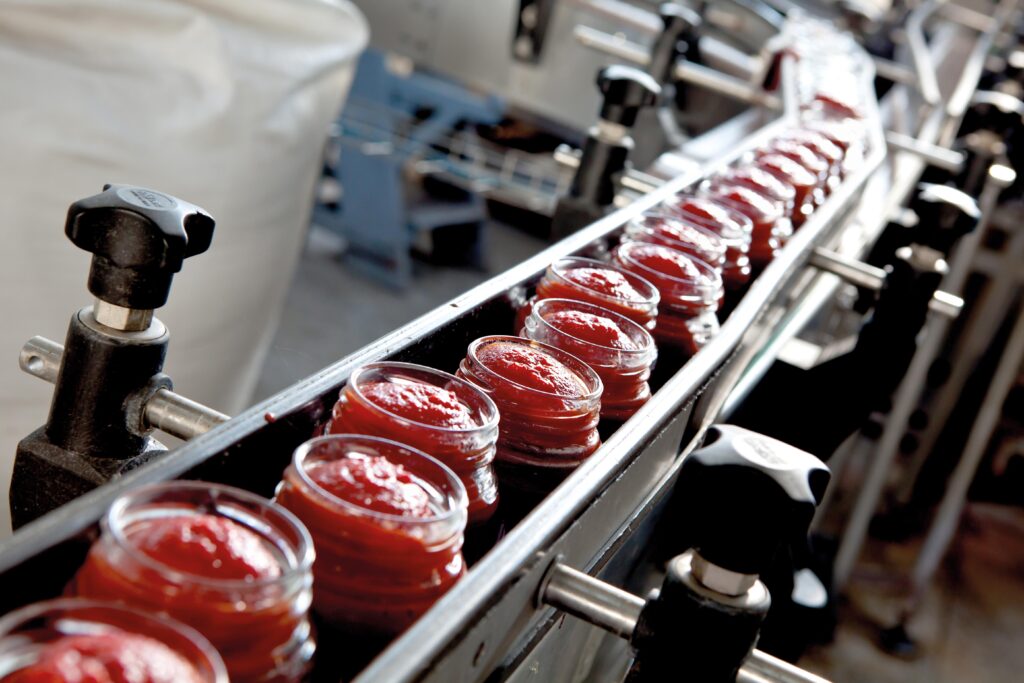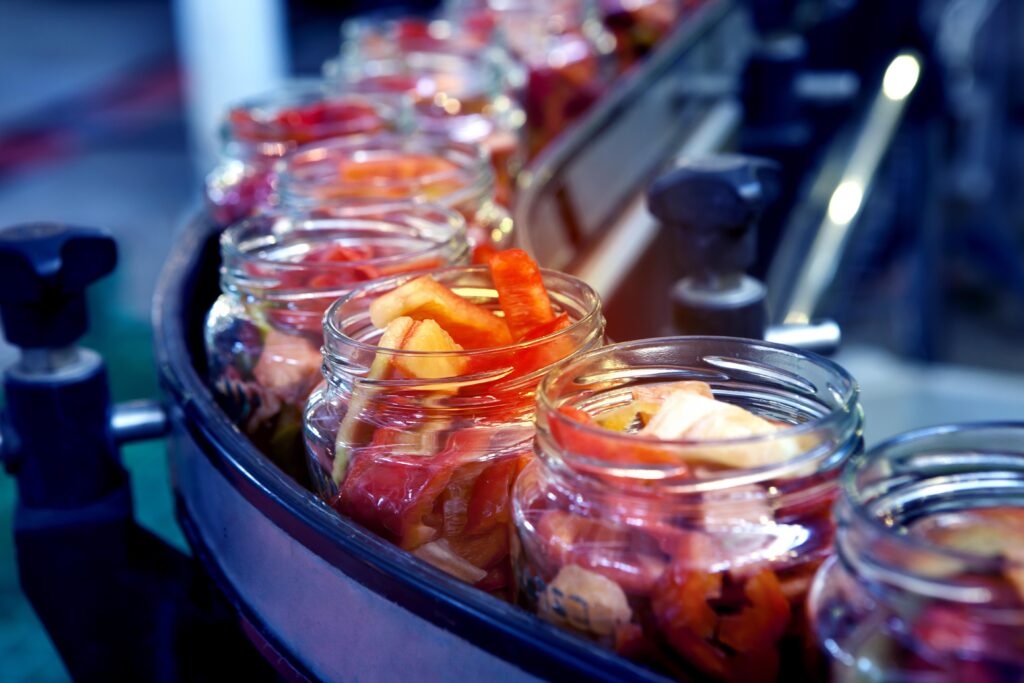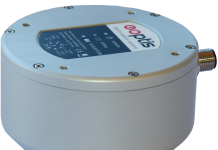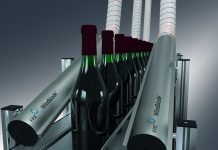 Innovations concern cost reduction and energy efficiency, as well as product quality, usability and sustainability, process technologies and processes.
Innovations concern cost reduction and energy efficiency, as well as product quality, usability and sustainability, process technologies and processes.
The canned food industry remains one of the leading sectors of the Italian food industry. This is also thanks to the use of increasingly sophisticated and high-performance technologies that concern both cost reduction and energy efficiency, as well as product quality, ease of use and sustainability, a theme that is increasingly felt by consumers.
Preserves contain a wide range of products and different raw materials, such as fruit in the case of marmalade, jam, fruit in syrup; vegetables in oil, vinegar, or brine; fish in oil or natural; meat in gelatine or vacuum-packed, etc. When it comes to preserves, a distinction must be made between preserved and semi-preserved products.
The former are subjected to a sterilizing heat treatment so that all vegetative and sporigenic bacterial forms die and the enzymes are inactivated. These products are stored in airtight packages to that the shelf-life is very long at room temperature. The heat treatment of semi-preserved products is milder.
These products are pasteurized to deactivate enzymes and eliminate pathogenic vegetative microbial forms, but not heat-resistant spores and microorganisms. For this reason, low temperatures and/or in combination with other preservation technologies, which involve the use of bacteriostatic preservatives, or which can act on pH by lowering it, such as acetic acid, sorbic acid, citric acid, lactic acid, etc. or by reducing aW by evaporation or by adding salt or sugar.
Innovation 4.0
The innovation targeted by the food canning industry more generally results in product and technological improvements rather than real innovations. Technological innovation is becoming crucial for the development of the canning sector, especially in terms of traceability, food safety and the development of circular and sustainable models, aimed, inter alia, at reducing food waste.
The use of blockchain, for example, allows canning companies to fully trace raw materials and thus control and verify the entire supply chain, ensuring product quality and improving environmental sustainability. The Blockchain (literally, “chain of blocks”) uses a computer network of nodes and allows data and information (e.g. transactions, passages, consensus and documentation across the entire chain) to be managed and updated in a unique and secure way. shared and distributed without the need for a central control and verification entity.
In addition, the information contained in the different blocks cannot be changed, making the chain transparent. As regards process innovations in the canning sector, they cover both the use of alternative raw materials and new technologies, which can work to improve products and their durability, environmental sustainability, increase productivity, reduce costs and waste.

Most used packaging systems
Preserved food products have a fairly long shelf-life; therefore, they need packages that do not invalidate the bactericidal action of heat treatment. For this reason, airtight containers are used. The most commonly used materials are tinplate, glass, and poly-coated cardboard packages. Tin-plate, i.e. a sheet of mild steel on which a thin layer of tin has been deposited, is lightweight and impermeable to light and oxygen. Other advantages are cost-effectiveness, ease of processing and 100 % recyclability.
It is used, for example, for tuna and legumes. Glass, a material obtained by high-temperature melting from a mixture of silica, sodium carbonate and calcium carbonate, can boast transparency, compactness and structural homogeneity, total chemical and biological inertia, impermeability to liquids, gases, vapors and microorganisms, unalterability over time, sterilizability and environmental friendliness thanks to the endless number of recycling possibilities. Glass also allows to see the product, when the aesthetic aspect is important; but, on the other hand, it is heavy and fragile.
Poly-coated cardboard packages are so named because they are the result of the coupling of two or more materials, to give the package specific properties, such as protection from external agents, light, and lower permeability to oxygen. Typically, the alternating layers are paper (75%), polyethylene film (21%) and aluminium (4%). Over the years, these packages have changed in design, giving consumers greater convenience in use; just think of the introduction of the cap and shapes increasingly similar to bottles, transparent windows, and measuring scoops. They are also lightweight, easy to recycle and durable. They are used for milk, juices and tomato purée.
Unconventional solutions for canned vegetables include aseptic bags made of multi-layer laminate, i.e. high-barrier films, for the transport and storage at room temperature of fluid or pasty products, such as tomato concentrates and fruit preparations, which have yet to be processed. These bags have a high mechanical strength and withstand temperature variations, preserving the organoleptic properties of the food contained.
Non-thermal technologies
Consumers’ drive for high-quality products encourages the development of alternative technologies for the preservation of canned foods, which, as we have seen, are based on high temperatures. The most promising technologies are the non-thermal ones, thanks to which companies in the canning sector can minimize the loss of nutritional quality – especially about thermolabile constituents – change in colour, taste and aroma, caused by conventional thermal processes, sterilization in the first place.
Technologies that can be applied instead of pasteurization and sterilization include High Pressure Processing (HHP), Pulsed Electric Fields (PEF), Ultrasound (US), Pulsed Light (PL), Ultraviolet Light (UV) and Cold Plasma (CP). Unfortunately, before they can be deployed on a large scale. further efforts are needed for process optimisation and in terms of cost-effectiveness.
It is worth mentioning the treatment with High Pressure Processing (HPP), which allows cold stabilization, preserving the sensory and nutritional properties of the product. The high isostatic pressures are applied in a hydrostatic autoclave, while the product to be processed must be pre-packed, in a cold press-safe packaging, usually made of plastic material. The autoclave is filled with water and pressurized by adding more water; water and food will compress about 15% of their volume.
The pressure is distributed omnidirectionally inside the vessel, regardless of product size and volume. Current technologies, capable of applying pressures of 5-600 Mpa, make it possible to equate High Pressure Processing to a sort of pasteurization regarding the influence on microorganisms. The main difference is the temperature, which is close to 20°C. Pressures inactivate non-sporigenic microorganisms (Salmonella, Listeria monocytogenes, S. aureus etc.), because they destroy their cell wall. Now, the treatment has no effect on the spores. In some cases, a mild heat treatment may be associated with HPP to inactivate heat-resistant spores and molds.
The most important applications are fruit and vegetable juices, ready-to-eat products, seafood products for the inactivation of Anisakis. As with other non-thermal technologies, what is holding back the capillary spread of high hydrostatic pressures are the high costs of the systems and the fact that the treatment has not yet been thought through continuously, but in batches. Among innovative non-thermal technologies, the Pulsed Electric Fields (PEF) treatment can be used as a pre-treatment.

The application of short-duration pulses of high voltages (typically 20-80 kV/cm) electric fields (usually in micro or nanosecond durations) to a food product between two electrodes may be a valid solution for inactivation of micro-organisms. Most conventional pre-treatments used in the canned food industry involve the mechanical destruction or the use of heat, which affect the nutritional properties of the processed food as well as energy costs. PEF treatment may also be used when food dehydration or juice extraction is required.
Ultraviolet (UV-C) and ultrasonic radiation are also alternative technologies for the preservation of certain canned foods, which are attracting interest from food companies. Ultrasound is based on cavitation, which is the mechanical vibration of acoustic waves at high frequency. The vacuum bubbles formed in the first phase implode, developing pressure inside the food. They can be used for freezing, drying, sterilizing, and freeze-drying food, as an alternative to heat treatment. In particular, ultrasonication, i.e. the application of low-temperature ultrasound, is used for temperature-sensitive products, while thermosonication combines ultrasound and heat, making the treatment more effective, and manosonication, which combines ultrasound and pressure.
Finally, by combining pressure, temperature, and ultrasound, manothermosnication is capable of inactivating heat-resistant micro-organisms and enzymes. Ultraviolet light can eliminate many micro-organisms, including E. coli, Salmonella, Listeria, and can be used for surface treatment of food, for the treatment and control of air quality in the production area, for the disinfection of packaging and bottling lines, for the disinfection of bottles and their closures.
Bulgarian researchers (Manev & N. Petkova, 2021) investigated the influence of ultraviolet light and ultrasound irradiation on the physiochemical, sensory, and microbiological characteristics of pear jam enriched with fibers. Research results showed that the treatment of ultraviolet light and ultrasound irradiation caused minimal changes in pH, titrable acidity, dry matter and sucrose content.
Colour, odour and taste also did not alter significantly, while graininess, elasticity and juiciness showed better acceptance for jam treated with ultrasound irradiation. The bactericidal effect of ultraviolet and ultrasonic irradiation is good. These technologies can be improved regarding technology and their applicability on a large scale. Researchers and companies are working to obtain increasingly natural products that preserve nutritional and organoleptic characteristics.



